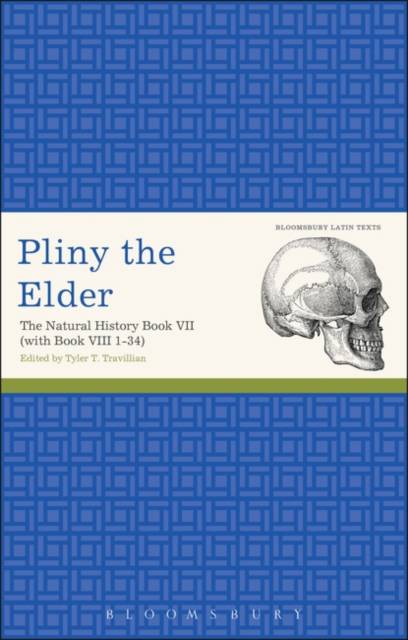
- Afhalen na 1 uur in een winkel met voorraad
- Gratis thuislevering in België vanaf € 30
- Ruim aanbod met 7 miljoen producten
- Afhalen na 1 uur in een winkel met voorraad
- Gratis thuislevering in België vanaf € 30
- Ruim aanbod met 7 miljoen producten
Zoeken
€ 59,45
+ 118 punten
Omschrijving
Pliny the Elder's Natural History is a vast encyclopaedia, surveying natural phenomena from cosmology to biology, medicine to magic. Direct observation, informed speculation and common knowledge are combined to present a key snapshot of ancient thought and the Romans' perspective on the world around them.
Book VII of The Natural History provides a detailed examination of the human animal and is crucial to understanding the work as a whole. In Pliny's eyes, mankind 'for whose sake nature was created', represents the basis for which the natural world was founded and structured. As a result, the book provides valuable insight into the extraordinary complex of ideas and beliefs that were current in Pliny's era. One of the most interesting transitions of subject in The Natural History is that from man to animals (between Books VII and VIII) and for this reason the section on elephants at the beginning of Book VIII is included here, to show how Pliny moves on to his account of the animal he considers 'nearest to the human disposition'.
This edition provides the full Latin text accompanied by commentary notes that provide linguistic help and explanations, plus vocabulary lists of Latin terms and an index of proper names. The in-depth introduction provides valuable details about the work's historical, scientific and literary context, as well as an overview of the work's legacy and reception.
Book VII of The Natural History provides a detailed examination of the human animal and is crucial to understanding the work as a whole. In Pliny's eyes, mankind 'for whose sake nature was created', represents the basis for which the natural world was founded and structured. As a result, the book provides valuable insight into the extraordinary complex of ideas and beliefs that were current in Pliny's era. One of the most interesting transitions of subject in The Natural History is that from man to animals (between Books VII and VIII) and for this reason the section on elephants at the beginning of Book VIII is included here, to show how Pliny moves on to his account of the animal he considers 'nearest to the human disposition'.
This edition provides the full Latin text accompanied by commentary notes that provide linguistic help and explanations, plus vocabulary lists of Latin terms and an index of proper names. The in-depth introduction provides valuable details about the work's historical, scientific and literary context, as well as an overview of the work's legacy and reception.
Specificaties
Betrokkenen
- Auteur(s):
- Uitgeverij:
Inhoud
- Aantal bladzijden:
- 368
- Taal:
- Engels
- Reeks:
Eigenschappen
- Productcode (EAN):
- 9781472535665
- Verschijningsdatum:
- 16/07/2015
- Uitvoering:
- Paperback
- Formaat:
- Trade paperback (VS)
- Afmetingen:
- 135 mm x 213 mm
- Gewicht:
- 498 g

Alleen bij Standaard Boekhandel
+ 118 punten op je klantenkaart van Standaard Boekhandel
Beoordelingen
We publiceren alleen reviews die voldoen aan de voorwaarden voor reviews. Bekijk onze voorwaarden voor reviews.











